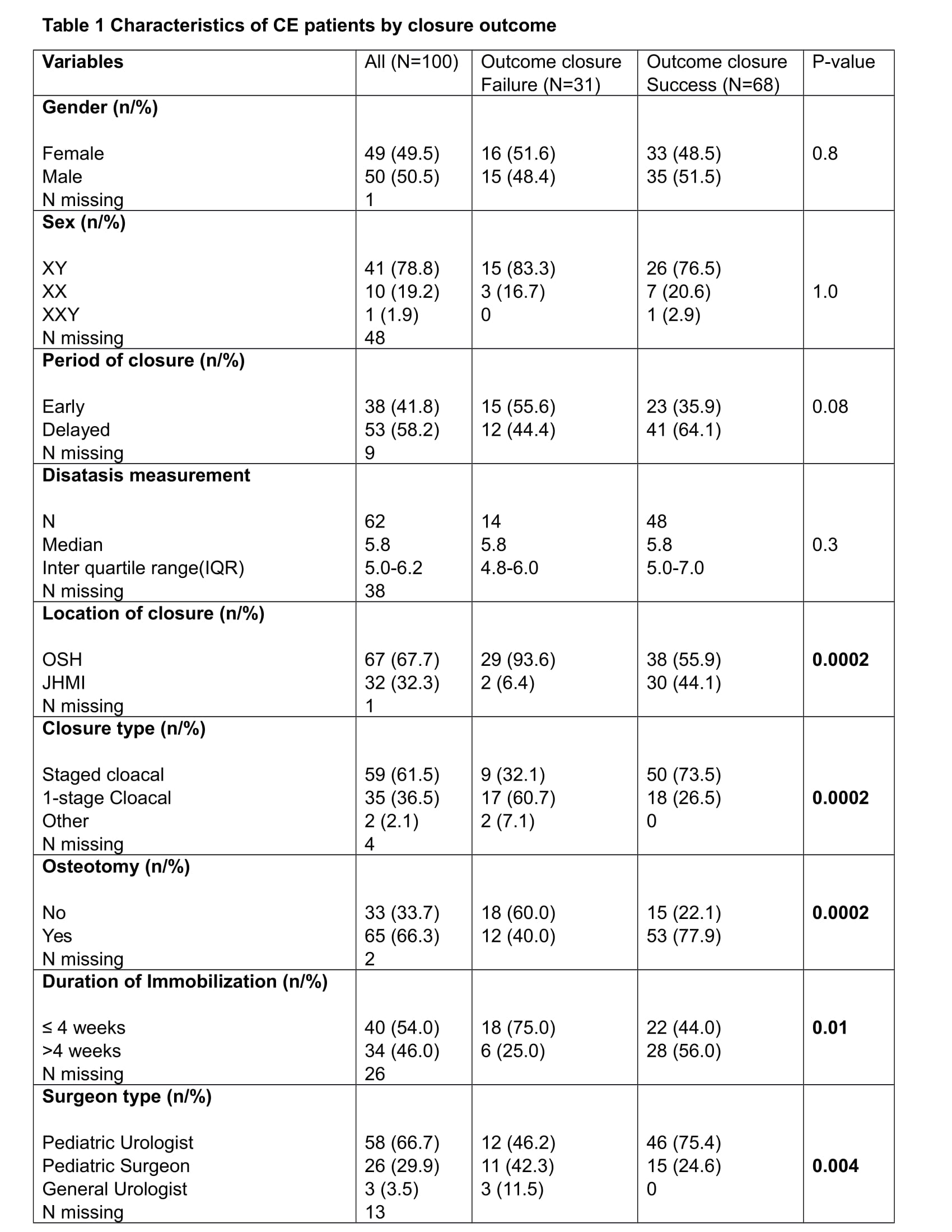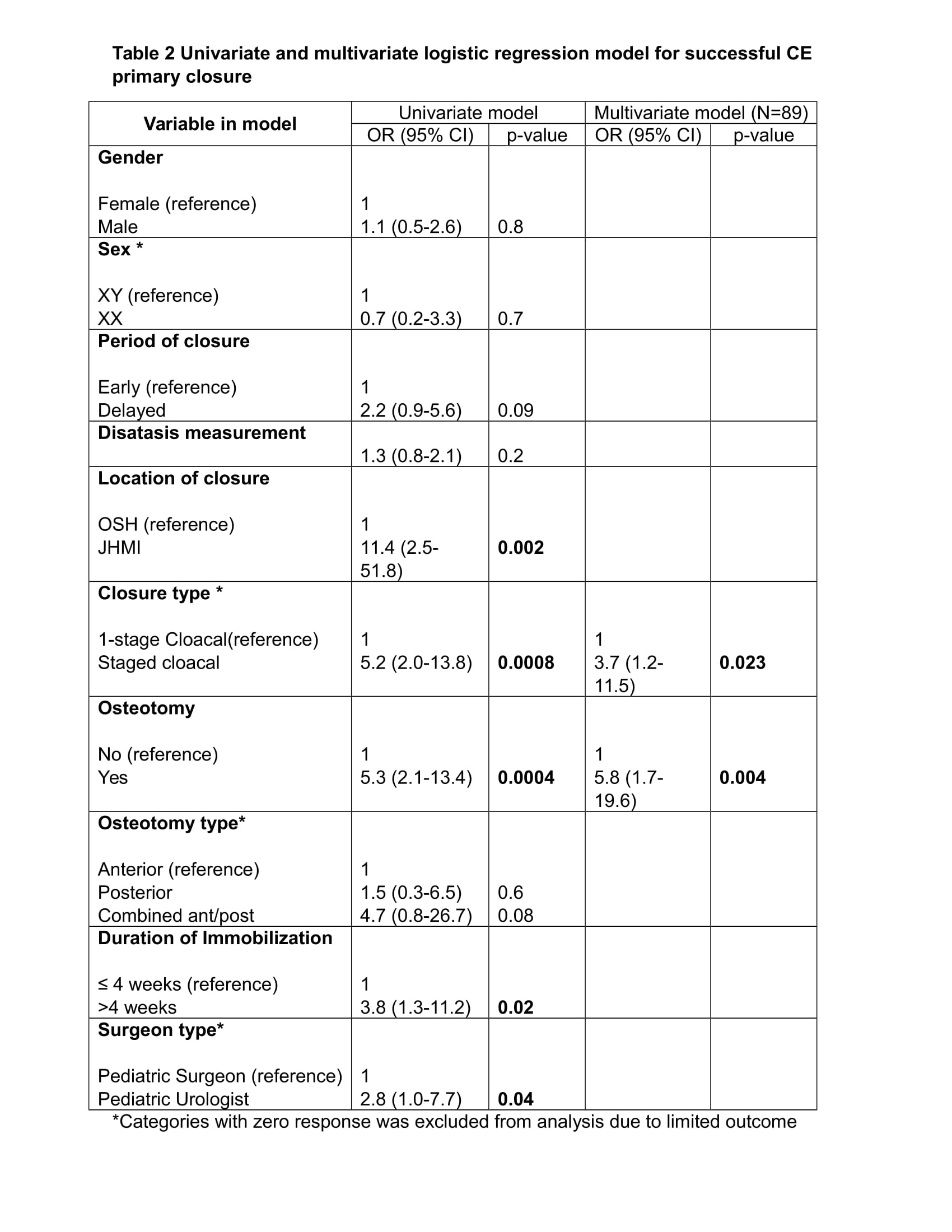Multivariate Analyses of the Factors Affecting Success in Cloacal Exstrophy Primary Closure
Ali Tourchi, M.D., John Jayman, BA, Zhaoyong Feng, MS, Mahir Maruf, M.D., Timothy Baumgartner, M.D., Heather Di Carlo, M.D., John Gearhart, M.D..
Johns Hopkins Hospital, Baltimore, MD, USA.
BACKGROUND: Achieving a successful primary bladder closure in cloacal exstrophy (CE) is paramount in establishing a foundation for bladder growth and establishment of future continence. A failed closure can have devastating long-term ramifications. This study reports the findings from a high volume exstrophy center on the factors impacting the success, or failure, of primary bladder closure in CE. The authors present the first study on the predictive factors affecting primary bladder closure in CE. METHODS: A prospectively-maintained institutional database of 1300 EEC patients was reviewed for a diagnosis of CE between 1975-2015. Best model fit multivariate logistic regression analyses were performed to identify significant factors associated with successful CE primary closure. RESULTS: Of 137 patients followed with CE, 100 patients met inclusion criteria. Median follow-up time was 8.82 [IQR 5.43-14.26] years. Univariate analyses demonstrated location of closure (OR, 11.4; 95% CI 2.5-51.8; p =0.002), type of closure (OR, 5.2; 95% CI 2.0-13.8; p <0.001), use of osteotomy (OR, 5.3; 95% CI 2.1-13.4; p <0.001), duration of immobilization (OR, 3.8; 95% CI 1.3-11.2; p =0.02), and surgeon type (OR, 2.8; 95% CI 1.0-7.7; p= 0.04) were all factors significantly associated with outcome of closure. However, when all significant univariate variables were analyzed through best model fit multivariate logistic regression analyses only type of closure (OR, 3.7; 95% CI 1.2-11.5; p= 0.023) and use of osteotomy (OR, 5.8; 95% CI 1.7-19.6; p= 0.004) were independent predictors of successful CE closure. The odds of having a successful closure are nearly 4 times greater for the staged cloacal approach compared to the 1-stage approach (OR, 3.7; 95% CI 1.2-11.5; p =0.023) and having an osteotomy increases the odds of a successful closure by almost six-fold (OR, 5.8; 95% CI 1.7-19.6; P=0.004). CONCLUSION: The modern staged repair of exstrophy, and the use of osteotomy were found to be independent predictors of a successful CE primary bladder closure. The authors recommend using the staged approach and osteotomy during primary closure of CE patients as it greatly increases the chance for a successful primary closure.

Back to 2017 Program
